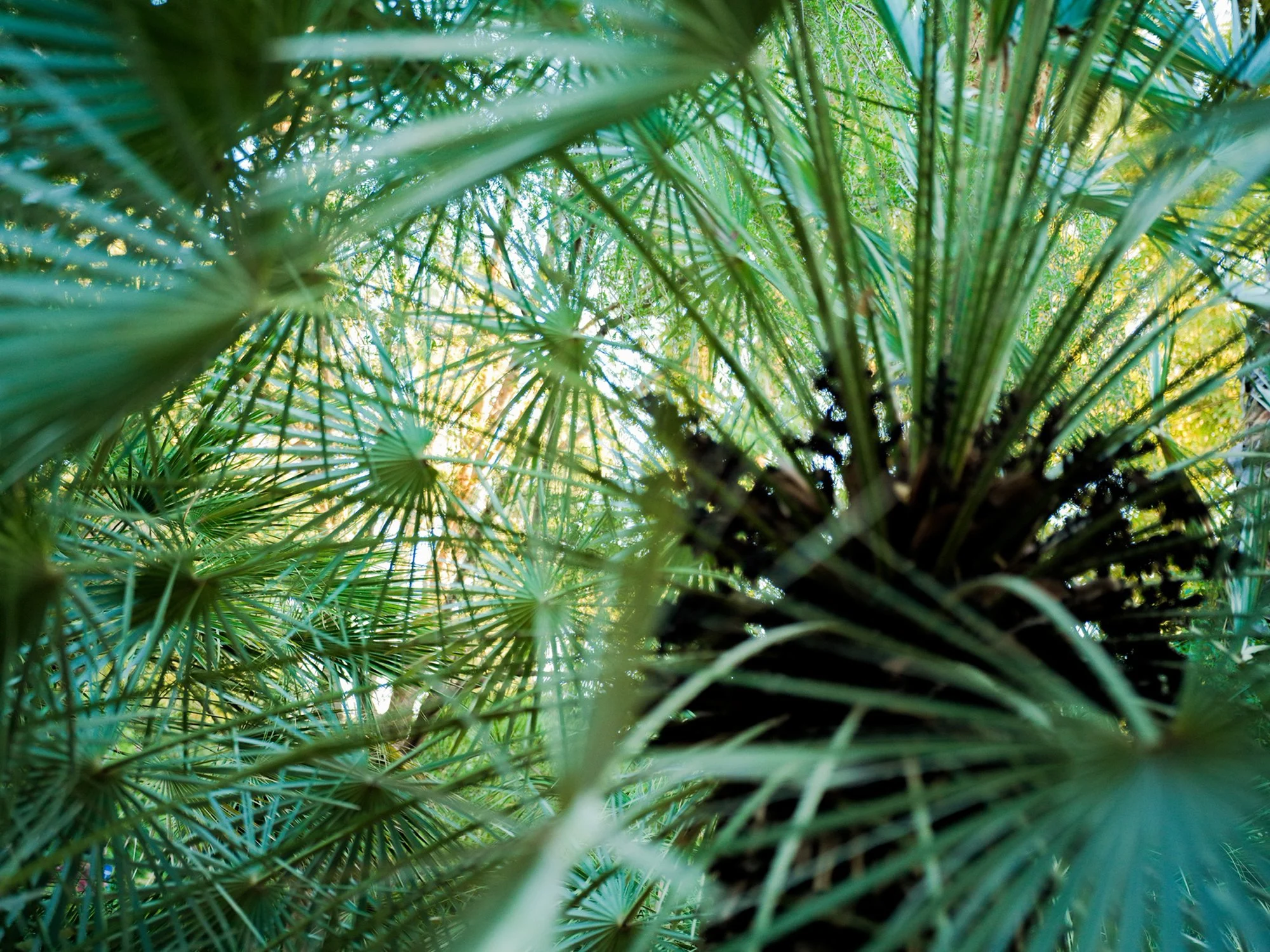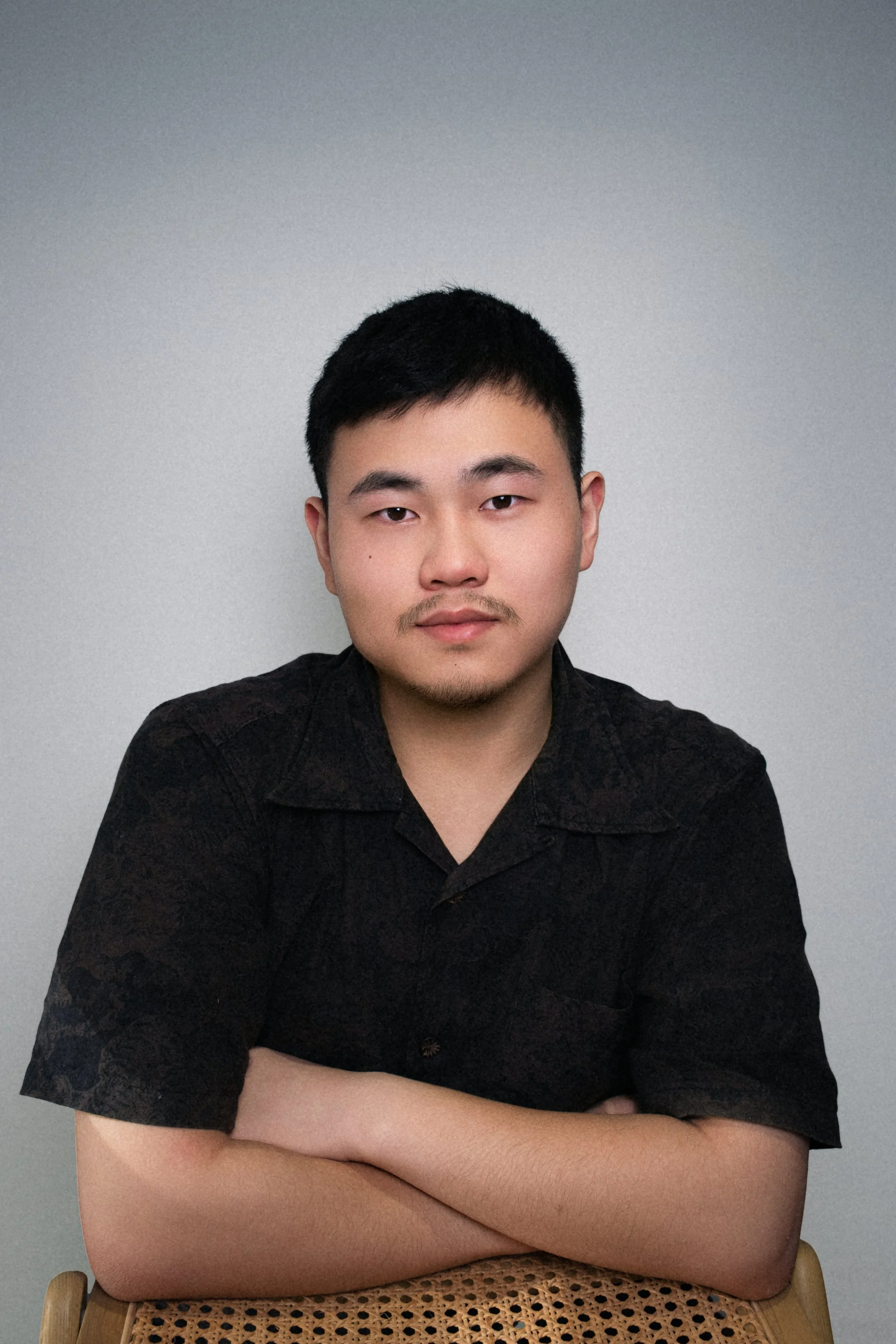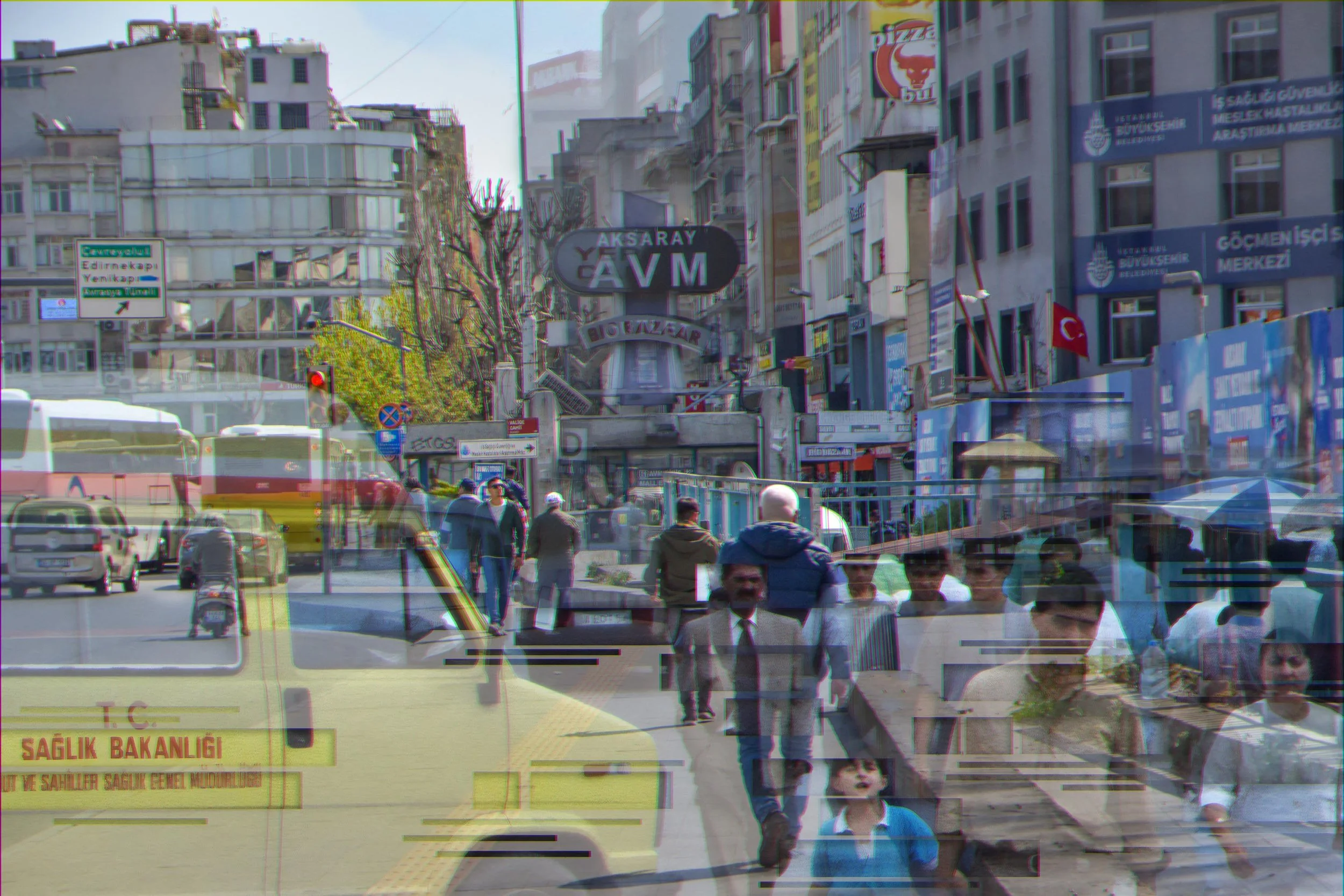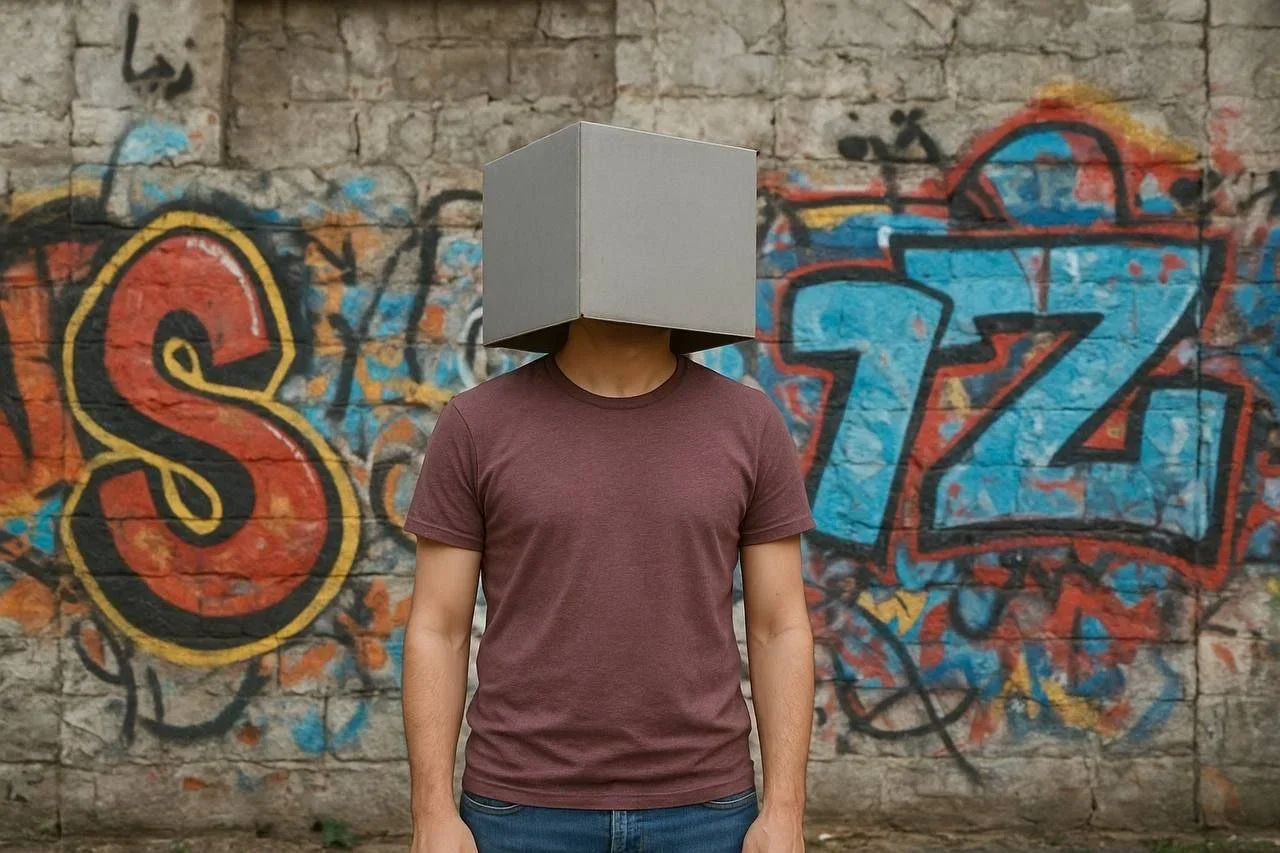10 Questions with Xiuzhuo Zhou
Xiuzhuo Zhou is a photographer and narrator of the inner world, whose work explores the subtle interplay between emotion, memory, and philosophical reflection. Originally from Hubei, China and now based in Southampton, UK, Zhou specialises in realistic photographic styles that capture the often-overlooked poetics of everyday life. His practice spans photography, installation, and new media, integrating technological approaches such as collage and AI-generated imagery to blur the boundaries between reality and imagination.
Zhou's work centres on themes of identity, temporality, and existential inquiry, focusing on how individuals navigate and preserve a sense of self amid rapid societal change. Through precise documentation and quiet observation, he reveals moments of humour, introspection, and quiet beauty, inviting viewers to re-examine their inner states and find meaning within the ordinary.
Xiuzhuo Zhou - Portrait
Silent Infrastructures | Project Description
In Silent Infrastructures, photographer Xiuzhuo Zhou explores how architecture and infrastructure quietly shape perception and control. The series omits human presence, focusing instead on built forms and synthetic materials that structure modern life.
Works like Algorithmic Heaven, Nervous System of a City, and Simulated Fluidity reveal how repetition, symmetry, and scale function as tools of soft regulation. These images dissect how spatial design enforces order, not by force, but through aesthetics.
Zhou avoids narrative and spectacle, positioning infrastructure as a silent agent of ideology. Power here is not declared through symbols, but embedded in patterns and surfaces. His images prompt us to reconsider the spaces we inhabit, how they guide us, and to what end.
Dense Signals-Nature as Interference, Photo, 2000x1500 px, 2023 © Xiuzhuo Zhou
INTERVIEW
First of all, can you tell us about your background and what first drew you to photography?
I was born in 2003 and grew up in Hubei, China, a land that carries the weight of Bronze-Age relics while racing through industrialisation. Because my family moved often, I became acutely aware of how time accumulates and identity drifts. My entry point into photography was not a camera but a single print a friend once handed me. Although we have since lost touch, every time I look at that photo, I recall the moment we shared. It showed me that an image can bottle fleeting emotion, preserving it against the flow of change. From then on, I began using the lens to record each moment in an ever-shifting world.
How has moving from Hubei, China, to Southampton, UK, influenced your artistic perspective?
Both my riverside hometown, where the Yangtze meets the Han, and the port city of Southampton belong to a “water-route culture” in which arrival and departure are everyday rituals. I often liken myself to a small boat, forever docking and casting off. Loneliness, absence, and the urge to take root are recurring themes in my work. Though Southampton may not be my final harbour, it has taught me to cherish every second, and that sense of appreciation now flows through my images.
Simulated Fluidity, Photo, 8000x6000 px, 2023 © Xiuzhuo Zhou
Your work often captures quiet, everyday moments. What inspires you to focus on the subtle and overlooked aspects of life?
Most of my inspiration rises from within. Whether restless or serene, I pick up the camera and look for details that echo my mood: dawn mist, a flicker of light on a roof, a lone tree. By shaping light and composition, I try to condense intangible feelings into something tangible, so viewers can sense the undercurrent beneath the surface.
You integrate technologies like collage and AI-generated imagery into your practice. How do these tools affect your creative process?
AI lets me digitise my style: I train a model on my personal archive, quickly generating sketches or colour schemes in my own visual language, testing what I might have captured in an alternate timeline. Collage is a tactile act of taking apart → extracting → re-assembling: I layer originals, archival material and AI drafts by semantic elements, spotlighting the narrative core so viewers grasp it instantly. The two methods complement each other: AI supplies swift variations, collage forges the fragments into something warm and contextual.
Much of your work explores themes of identity and temporality. How do you personally relate to these themes?
In “Autumn’s Breath,” Southampton’s golden woods became a temporary harbour for my drifting life. In “Ephemeral,” shot on Lake Hallstatt, Austria, I echoed the line “Colourful clouds scatter easily; glass shatters quickly,” capturing a swan’s wake as it vanished, reminding myself that identity, encounters, and beauty all dissipate like vapour. Every shutter press is really a question: Who am I right now?
Algorithmic Heaven, Photo, 8000x6000 px, 2023 © Xiuzhuo Zhou
Vertical Faith-The Geometry of Power, Photo, 4000x3000 px, 2023 © Xiuzhuo Zhou
In your series Silent Infrastructures, you highlight how architecture shapes perception. What led you to explore architecture in this way?
I treat the supporting elements of city and nature as a hidden code that silently rewrites our posture and emotional tempo. My lens is first “disciplined” by domes, scaffolding, pylons, metal façades and palm-leaf veins, geometries that pull the gaze upward or squeeze it sideways, shaping how we breathe and even how we think. Then I plant tiny instabilities: dust drifting in Sagrada Família’s stained glass, shadows between power lines, rust speckles on scaffolds, water-like reflections on steel. These fissures hint at the fragility of every system and suggest that the man-made and the natural share a reticular life, both supporting and consuming. I want viewers to feel a bodily vibration between vast order and quiet disorder, as though inside a colossal, seemingly mute machine that still roars beneath the surface, questioning their own scale, freedom and belonging.
You often avoid human presence in your photographs. What does this choice allow you to express?
“Absence” is my enduring core. Figures certainly drive narrative, yet I am more interested in how a space speaks once its occupants have gone, the dent in an empty chair, the dust in a vacant hall, the echo beneath a deserted nave. For me, absence amplifies presence.
How do you balance realism with imagination in your photographic style?
Most of my images are documentary: natural light, long exposure, ambient sound. Yet I open a narrow seam between reality and reverie, double-exposing clouds over city light trails, or stretching a night shutter so lamps become filaments, revealing hidden rivers of time. Viewers stand in the real scene while glimpsing an inner landscape.
Nervous System of a City, Photo, 8000x6000 px, 2023 © Xiuzhuo Zhou
Support System, Photo, 8000x6000 px, 2023 © Xiuzhuo Zhou
Are there particular artists, philosophers, or writers who have influenced your thinking and practice?
Photography / moving image: Hiroshi Sugimoto’s suspended time, Andreas Gursky’s macro-order, Wolfgang Tillmans’s everyday lyricism
Architecture & space: Tatiana Bilbao’s human scale, Kengo Kuma’s “negative architecture”
Philosophy: Maurice Merleau-Ponty’s body-space phenomenology, Heidegger’s Dasein and “dwelling”
Literature: Italo Calvino’s Invisible Cities, Borges’s mirrors and labyrinths, Yu Hua’s Cries in the Drizzle
They keep showing me how an apparently hollow space can carry narrative, and how time can fold into a single frame.
Lastly, looking ahead, are there any new projects or directions you’re excited to explore?
I’m expanding still images into immersive worlds:
Unity / Unreal Engine: rebuilding my shooting sites in 3-D so visitors can roam beneath virtual vaults and hear the architecture breathe.
Real-time AI: a custom model trained on my archive will continuously generate scenes during the exhibition, breaking the limit of a finite body of work.
I plan to release my first photobook, Absence Atlas, next year and apply for a European residency. Fieldwork will cut drone flights and rely on full carbon offsets, searching for a more sustainable practice. My aim is for viewers to enterthose silent infrastructures and feel their faint yet perpetual pulse.
Artist’s Talk
Al-Tiba9 Interviews is a promotional platform for artists to articulate their vision and engage them with our diverse readership through a published art dialogue. The artists are interviewed by Mohamed Benhadj, the founder & curator of Al-Tiba9, to highlight their artistic careers and introduce them to the international contemporary art scene across our vast network of museums, galleries, art professionals, art dealers, collectors, and art lovers across the globe.





















